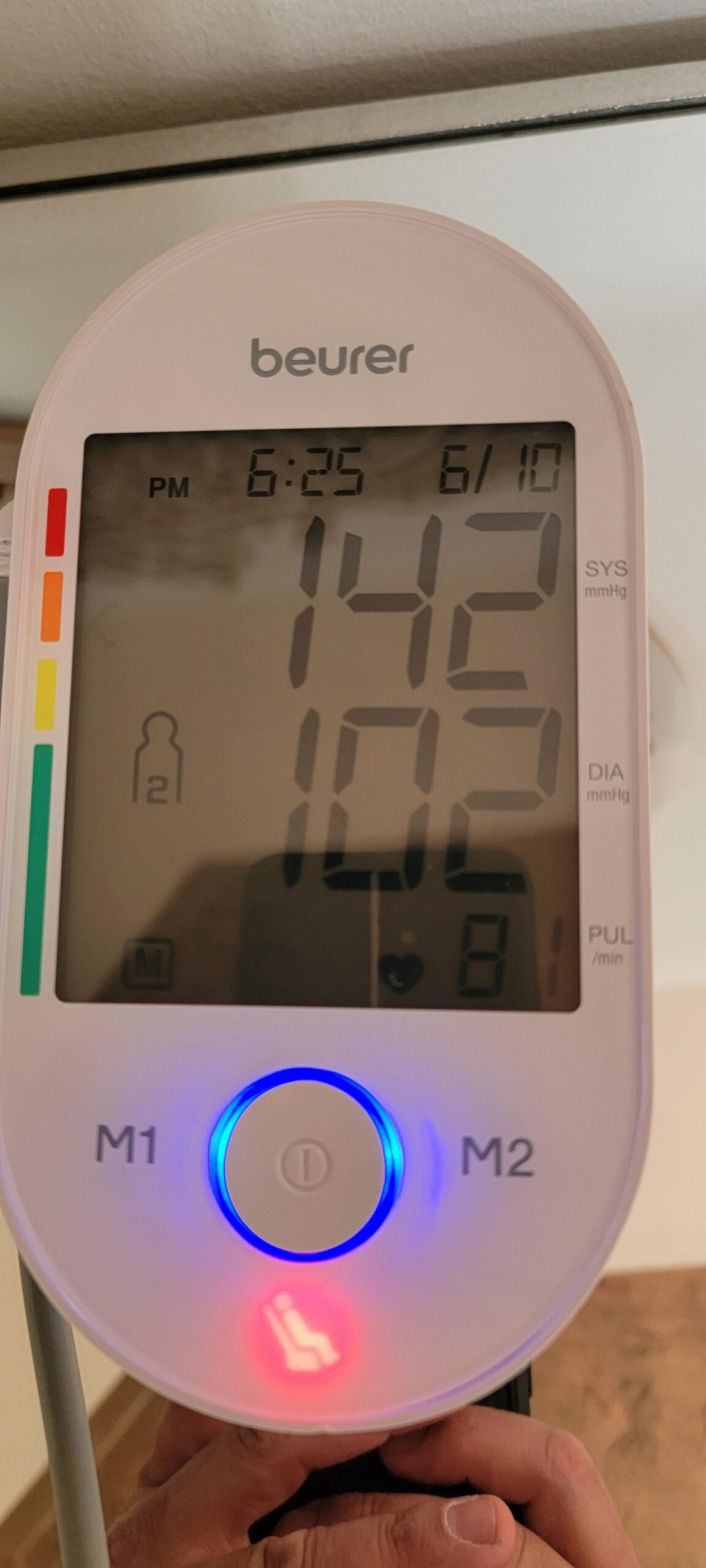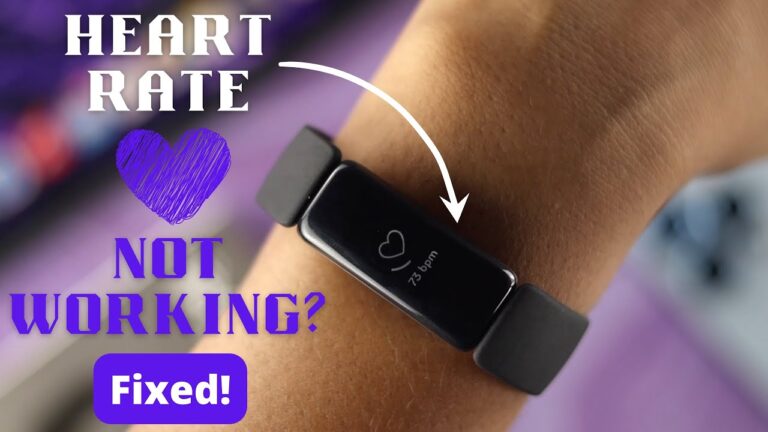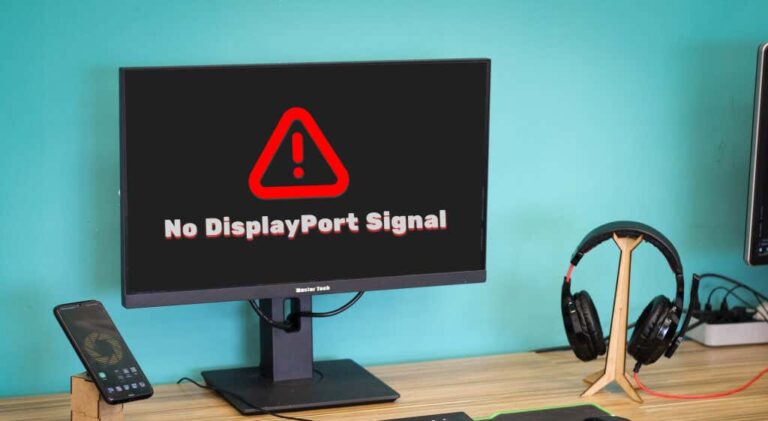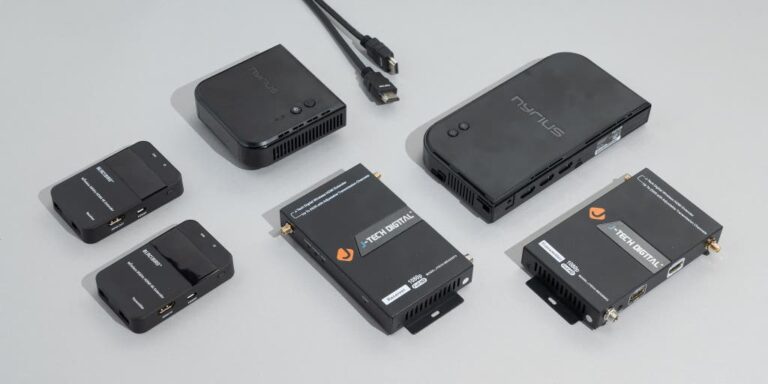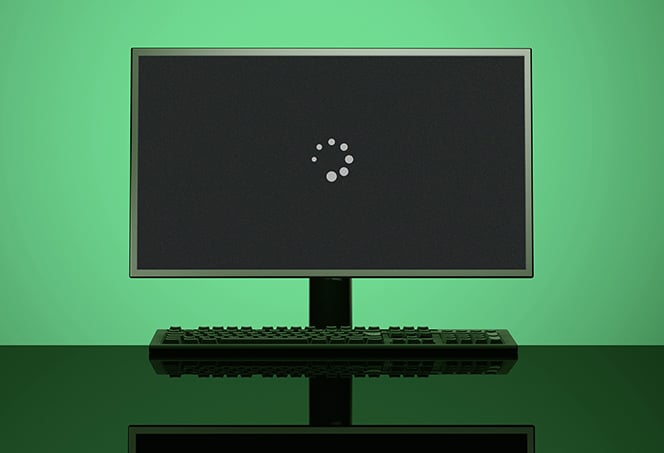Beurer Blood Pressure Monitor Not Working: Troubleshooting Tips
If your Beurer blood pressure monitor is not working, it could be due to a loose connection, dead battery, or a faulty sensor. Check the battery level and ensure that all connections are secure.
If the monitor stops and starts again, it may indicate a low battery. Additionally, make sure that the cuff size, air tube, and other equipment-related factors are not causing errors in measurement. Faulty or inaccurate automated devices can also contribute to inaccurate blood pressure readings.
Common Issues With Beurer Monitors
Beurer blood pressure monitors are reliable devices that provide accurate readings, helping individuals monitor their blood pressure levels conveniently at home. However, like any electronic device, they may encounter some common issues. In this section, we will discuss three common problems that users may face with their Beurer monitors and provide potential solutions.
Power Supply Problems
One of the common issues with Beurer blood pressure monitors is power supply problems. If your monitor is not turning on or displaying any readings, it could be due to a dead battery or a loose connection. Here are a few steps you can take to troubleshoot this issue:
- Check the battery level: Ensure that the batteries in your monitor are not depleted. Replace them if necessary.
- Verify the battery orientation: Double-check that the batteries are inserted correctly, following the indicated polarity (+ and -).
- Secure the battery compartment: Make sure the battery compartment is securely closed to establish a proper connection.
- Test with new batteries: If the above steps do not resolve the issue, try using new batteries to eliminate the possibility of faulty batteries.
Cuff Placement Errors
Another common issue with Beurer monitors is cuff placement errors. Incorrect cuff placement can lead to inaccurate readings or cause the monitor to display an error message. Follow these guidelines to ensure proper cuff placement:
- Select the right cuff size: Ensure that you are using a cuff that fits your arm circumference correctly. Using an ill-fitting cuff can result in inaccurate readings.
- Position the cuff properly: Place the cuff on your upper arm, aligning the bottom edge of the cuff with the bend of your elbow. The cuff should be snug but not too tight or loose.
- Keep the cuff at heart level: During measurement, keep your arm and the cuff at the same height as your heart. This position ensures accurate blood pressure readings.
- Avoid movement: Stay still and avoid talking or moving during the measurement. Movement can interfere with the monitor’s ability to accurately detect your blood pressure.
Tube And Connector Malfunctions
The third common issue with Beurer monitors is tube and connector malfunctions. If you notice air leaks or have difficulty inflating the cuff, it could indicate a problem with the tube or the connectors. Here’s what you can do:
- Check for air leaks: Carefully inspect the tube and connectors for any visible cracks, kinks, or loose connections that may result in air leaks. Replace any damaged components.
- Ensure proper connection: Make sure the tube is securely attached to both the cuff and the monitor. Ensure that the connectors are properly inserted and tightened.
- Test with a different tube: If the above steps do not resolve the issue, try using a different tube to identify whether the problem lies with the original tube or the monitor itself.
By addressing these common issues, you can troubleshoot and potentially resolve problems you may encounter with your Beurer blood pressure monitor. Remember to follow the manufacturer’s instructions and consult the user manual for model-specific troubleshooting steps if necessary.
Identifying Your Monitor’s Problem
If you’re experiencing issues with your Beurer Blood Pressure Monitor, it’s important to identify the problem. This will help you determine whether it can be easily fixed or if you need to contact customer support. In this section, we will explore some common problems that may occur with your monitor and how to identify them.
Error Messages Interpretation
If you’re seeing error messages on your Beurer Blood Pressure Monitor, it’s essential to understand what they mean. These messages provide valuable information about the issue at hand. Here are some common error messages and their interpretations:
| Error Message | Interpretation |
|---|---|
| EE | The cuff has been wrapped too loosely or not at all. Make sure to wrap the cuff securely around your arm. |
| Err 1 | The cuff has been wrapped too tightly. Loosen the cuff and try again. |
| Err 2 | An irregular heartbeat has been detected. Make sure you’re in a calm and relaxed state before taking measurements. |
Symptoms Of Faulty Operations
Faulty operations can manifest in various ways. Here are some symptoms to look out for:
- The monitor fails to inflate the cuff properly.
- The readings are inconsistent or unusually high/low.
- The device doesn’t turn on or turns off unexpectedly.
- There is a significant time delay between measurements.
Getting Familiar With User Manual Indicators
The user manual is a valuable resource for troubleshooting your Beurer Blood Pressure Monitor. It provides specific indicators to help you identify and address issues. Familiarize yourself with the user manual to understand what each indicator signifies. Some common indicators include:
- Battery low indicator: This indicates that the battery is running low and needs to be replaced.
- Error code indicator: This signifies a specific error with the monitor, which can be referenced in the manual for troubleshooting steps.
- Cuff size indicator: This ensures that the chosen cuff size is appropriate for accurate measurements.
By identifying the specific problem with your Beurer Blood Pressure Monitor, you’ll be better equipped to find a solution. Whether it’s addressing error messages, recognizing faulty operations, or referencing the user manual indicators, understanding the issue is the first step towards resolving it.
Quick Fixes And Adjustments
Is your Beurer Blood Pressure Monitor not working? Don’t worry, there are several quick fixes and adjustments you can try before assuming there is a major issue. Here are some troubleshooting tips to get your blood pressure monitor back up and running:
Resetting The Device
If your blood pressure monitor is displaying inaccurate readings or not functioning properly, the first step is to reset the device. Follow these steps to reset your Beurer Blood Pressure Monitor:
- Locate the reset button on your blood pressure monitor. It is usually located on the back or the side of the device.
- Using a small, pointed object such as a paperclip or a pin, press and hold the reset button for 10-15 seconds.
- Release the reset button and wait for the device to power off.
- Turn the blood pressure monitor back on and check if the issue has been resolved.
Ensuring Proper Battery Installation
One common reason for a blood pressure monitor not working is incorrect battery installation. Double-check that the batteries are inserted correctly according to the manufacturer’s instructions. Follow these steps to ensure proper battery installation:
- Remove the battery compartment cover on the back of the device.
- Take out the existing batteries, if present, and inspect them for any signs of corrosion or damage. If necessary, replace them with new batteries.
- Insert the batteries according to the polarity markings inside the battery compartment.
- Close the battery compartment cover securely.
Adjusting Cuff And Sitting Posture
The accuracy of blood pressure measurements can be influenced by the positioning of the cuff and your sitting posture. Make sure to follow these guidelines:
- Ensure the cuff is positioned at heart level on your upper arm. A misaligned cuff can lead to inaccurate readings.
- Secure the cuff snugly but not too tightly around your upper arm.
- Sit in a chair with your back supported and feet flat on the ground.
- Keep your legs uncrossed and your arm relaxed and supported on a table or armrest.
By adjusting the cuff position and maintaining proper sitting posture, you can improve the accuracy of your blood pressure readings.
Advanced Troubleshooting Tips
When your Beurer Blood Pressure Monitor is not working properly, there are a few advanced troubleshooting tips you can try before seeking professional repair services. By following these guidelines, you might be able to resolve the issue and get your monitor working again.
Beurer Blood Pressure Monitor Calibration Checks
One possible reason for your Beurer Blood Pressure Monitor not working accurately is a calibration issue. Calibration ensures that the readings are precise and reliable. To check if calibration is the problem, follow these steps:
- Refer to the user manual to find out if your monitor can be calibrated. Some models offer this feature.
- If calibration is possible, make sure that the cuff is properly applied and positioned on your arm.
- Follow the calibration instructions provided in the user manual carefully.
- Repeat the measurement after calibration to see if the monitor is now providing accurate readings.
Software Updates And Technical Support
Another potential solution for fixing your Beurer Blood Pressure Monitor is to update the software or seek technical support.
- Check the manufacturer’s website for any software updates or firmware upgrades available for your specific model.
- Download and install any updates as instructed to ensure that your monitor is running on the latest software version.
- If you are still facing issues after updating, reach out to Beurer’s technical support team for assistance. They can provide valuable guidance and troubleshooting steps.
When To Seek Professional Repair Services
In some cases, despite trying the troubleshooting tips mentioned above, your Beurer Blood Pressure Monitor may still not be working correctly. At this point, it is advisable to seek professional repair services to diagnose and fix the problem. Consider reaching out to Beurer’s authorized service center or a qualified technician who specializes in blood pressure monitor repairs.
Remember, it’s crucial to ensure the accurate functioning of your blood pressure monitor, as it directly affects your health monitoring. By following these advanced troubleshooting tips and knowing when to seek professional help, you can ensure that your Beurer Blood Pressure Monitor stays in optimal working condition, providing you with accurate readings and peace of mind.
Maintenance Practices For Longevity
Proper maintenance plays a crucial role in ensuring the longevity and accuracy of your Beurer Blood Pressure Monitor. By following some simple maintenance practices, you can keep your device in optimal working condition, allowing you to track your blood pressure readings effectively. In this section, we will discuss three essential maintenance practices that can help prolong the lifespan of your blood pressure monitor.
Regular Cleaning And Storage Advice
To maintain the performance and accuracy of your Beurer Blood Pressure Monitor, it is important to regularly clean and store it properly. Cleaning your device after every use helps remove any dirt, oil, or debris that might hinder accurate readings. Use a soft, damp cloth and mild detergent to wipe the monitor’s surface gently. Avoid using harsh chemicals or abrasive materials as they may damage the device.
When storing your blood pressure monitor, ensure that it is kept in a clean and dry environment. Store it in its original box or a protective case to shield it from dust and moisture. This will prevent any potential damage to the internal components and prolong its lifespan.
Routine Self-check Procedures
Performing routine self-checks on your Beurer Blood Pressure Monitor is essential to detect any issues early on. Start by verifying the battery level to ensure it is not running low. A low battery can cause irregular readings or device malfunction. If the battery is low, replace it as soon as possible to maintain accurate readings.
Next, check for any loose connections or faulty cables. Inspect the air tube and cuff for any signs of wear or tear. Ensure that the cuff is properly attached to the monitor and securely fastened around your arm. Loose connections or damaged components can affect the monitor’s performance, leading to inaccurate readings.
Importance Of Periodic Professional Inspections
While regular self-checks are crucial, periodic professional inspections are equally important to ensure the accuracy and reliability of your Beurer Blood Pressure Monitor. Professional inspections involve a comprehensive assessment of the device’s functionality, calibration, and sensor accuracy.
By scheduling periodic inspections with a qualified technician, you can address any underlying issues promptly. This will help identify potential malfunctioning components or inaccuracies in blood pressure measurements. Additionally, professional inspections can also provide recommendations for calibration or replacements if necessary.
Remember, maintaining your Beurer Blood Pressure Monitor is vital to obtain accurate readings and ensure its longevity. Incorporate these maintenance practices into your routine to maximize the lifespan of your device and track your blood pressure effectively.

Credit: www.amazon.com
Frequently Asked Questions For Beurer Blood Pressure Monitor Not Working
Why Has My Blood Pressure Monitor Stopped Working?
Possible reasons for your blood pressure monitor not working properly include a loose connection, dead battery, or a faulty sensor. If the monitor stops and starts again, check the battery level. Other potential issues could be moving during measurement, incorrect cuff size, or a problem with the air tube.
It’s important to ensure that the equipment is accurate and has been properly tested for reliability.
How Do I Know If My Blood Pressure Monitor Is Bad?
If your blood pressure monitor is not working, there could be a simple issue like a loose connection or dead battery. It could also indicate a more serious problem like a faulty sensor. Check the battery level and connection, and if the problem persists, consult a professional.
Additionally, errors in measurement can occur if the cuff size is incorrect or the device is not tested for accuracy.
Can Blood Pressure Monitors Be Faulty?
Yes, blood pressure monitors can be faulty due to various reasons such as a loose connection, dead battery, faulty sensor, incorrect cuff size, or errors in measurement. It is important to check battery levels and ensure proper functioning for accurate readings.
Why Is My Blood Pressure Monitor Not Working Properly?
Possible Reasons Why Your Blood Pressure Monitor May Not Be Working Properly:
It could be something as simple as a loose connection or a dead battery. Or, there could be a more serious problem, such as a faulty sensor. If your blood pressure monitor stops and starts again, it could be a sign that your battery is running low. Check the battery level and, if necessary, replace it.
Conclusion
If you’re experiencing issues with your Beurer Blood Pressure Monitor, there are several possible reasons for its malfunction. It could be as simple as a loose connection or a dead battery. However, it could also indicate a more serious problem, such as a faulty sensor.
If your monitor stops and starts again, check the battery level and ensure that you have the correct cuff size. Remember that equipment-related errors can affect the accuracy of readings, so it’s important to use a properly tested and calibrated device.
Always consult the manufacturer’s instructions or seek professional advice if you’re unsure.
